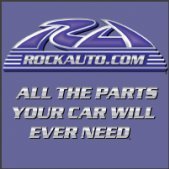-
Welcome to Auto Parts Forum
Whether you are a veteran automotive parts guru or just someone looking for some quick auto parts advice, register today and start a new topic in our forum. Registration is free and you can even sign up with social network platforms such as Facebook, X, and LinkedIn.
Loaded Struts: What’s In A Name?
-
Similar Topics
-
By Dorman Products
Swapping a knuckle or replacing a bearing? Loaded knuckles are the DIYers best friend
-
By Nflow888
Looking for the name of two arms in back rear that connect to knuckle. I thought it was trailing arm but when I bought that part it was too long. Appreciate your help!!
-
By Counterman
NGK Spark Plugs (U.S.A.) Inc. announced that effective April 1, the company name will become Niterra North America Inc.
Announced late last year, the name change will include a new corporate logo and identity as the organization follows a strategy to unify the global brand and promote efforts to transform the organization’s business portfolio. Accordingly, the global brand NGK Spark Plug Co. LTD will also begin operating under the English tradename Niterra Co., Ltd on April 1.
“It is an exciting time in the long and storied history of NGK Spark Plug., LTD,” said Michael Schwab, president, and CEO. “We are becoming an increasingly progressive corporation as we strive to meet our vision for the future. A future where we expand our core ceramic technologies, explore capabilities beyond our traditional areas, and challenge ourselves to develop solutions and services that use technologies to resolve social issues while contributing to a sustainable society.”
Niterra, a coined word, combines the Latin words Niteo, meaning shine, and Terra, meaning planet earth. The corporation chose the new name, logo and colors represented to present a broader image of its modern identity.
The company will continue to use the trusted NGK and NTK brands for its spark plug and ceramic-related product portfolio.
The post
link hidden, please login to view appeared first on link hidden, please login to view.
link hidden, please login to view
-




Recommended Posts
Join the conversation
You can post now and register later. If you have an account, sign in now to post with your account.
Note: Your post will require moderator approval before it will be visible.